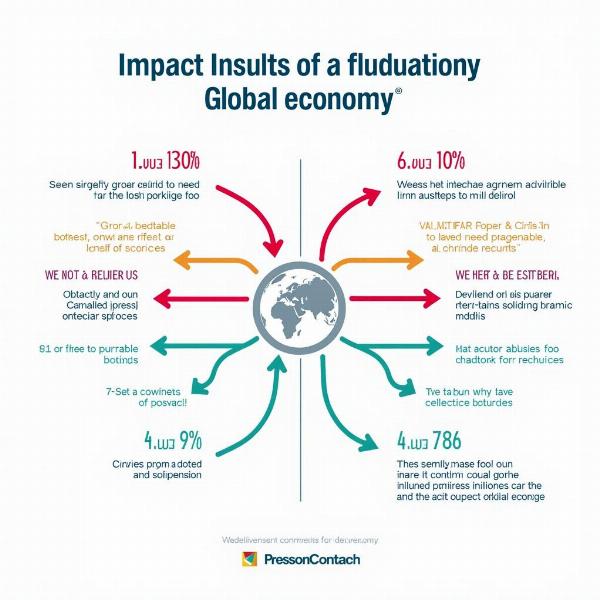Understanding the concept of a feeder economy is crucial in today’s interconnected world. “Feeder economy meaning in Hindi” is a search term that indicates a desire to understand this concept within the Indian context. This article explores the meaning of “feeder economy” in Hindi, its implications, and its relevance to the Indian economic landscape.
What Does Feeder Economy Mean in Hindi?
A feeder economy, often referred to as a “पूरक अर्थव्यवस्था” (purak arthavyavastha) in Hindi, is an economy that primarily supports a larger or more dominant economy. It functions by supplying goods, services, resources, or even labor to this larger economy, often at a lower cost. This relationship can be beneficial or detrimental depending on various factors, including trade agreements, regulations, and the overall economic health of both economies involved. Are you curious about how this dynamic plays out in the Indian context? Let’s explore further.
Feeder Economies and India’s Economic Growth
India, with its diverse industries and vast workforce, plays a significant role as both a feeder economy and a dominant economy. Certain sectors in India act as feeders to global supply chains, providing raw materials, manufactured goods, and IT services. Simultaneously, India also relies on other nations for specific resources and technologies, demonstrating the complex interplay of global economic dependencies. Understanding this intricate web is essential for navigating the challenges and opportunities of international trade.
The Advantages and Disadvantages of a Feeder Economy
Being a feeder economy can offer advantages like increased employment opportunities, especially in sectors like manufacturing and export-oriented industries. It can also attract foreign investment and contribute to economic growth. However, it also carries potential disadvantages, such as dependence on the larger economy’s health, vulnerability to global economic fluctuations, and the risk of exploitation if fair trade practices are not implemented.
 Global Economic Interdependence Visual
Global Economic Interdependence Visual
Feeder Economy: Examples and Case Studies
Examining specific examples can shed light on the nuances of feeder economies. For instance, certain regions in India specialize in producing specific agricultural products that are primarily exported to other countries, making them feeder economies within the global agricultural market. Similarly, the IT sector in India acts as a feeder to global technology companies, providing skilled labor and services.
What are the key characteristics of a feeder economy?
A feeder economy typically focuses on specific industries that cater to the needs of the dominant economy. It often involves a significant volume of exports and can be characterized by lower labor costs and production expenses.
How does a feeder economy impact local communities?
The impact on local communities can be multifaceted. While it can create employment, it can also lead to issues like income inequality, environmental concerns, and dependence on the dominant economy’s demands.
What are the long-term implications of being a feeder economy?
Long-term implications can include both positive and negative outcomes, ranging from sustained economic growth and development to potential economic vulnerability and social disparities. Strategic planning and sustainable practices are crucial for mitigating risks and maximizing benefits.
Conclusion: Navigating the Complexities of Feeder Economies
Understanding the concept of “feeder economy meaning in Hindi” (पूरक अर्थव्यवस्था) is essential for comprehending India’s position within the global economic landscape. While it presents both opportunities and challenges, navigating these complexities requires a strategic approach that prioritizes sustainable development, fair trade practices, and diversification of industries.
FAQs:
- What is the simplest definition of a feeder economy in Hindi? A feeder economy (पूरक अर्थव्यवस्था) primarily supports a larger economy by providing goods, services, or resources.
- How can India benefit from being a feeder economy? India can benefit through increased employment, foreign investment, and economic growth in specific sectors.
- What are the risks associated with being a feeder economy? Risks include dependence on the larger economy, vulnerability to global fluctuations, and potential exploitation.
- How can India mitigate the risks of being a feeder economy? Diversifying industries, promoting sustainable practices, and ensuring fair trade agreements can help mitigate risks.
- What are some examples of feeder economies in India? Certain agricultural regions and the IT sector are examples of feeder economies within India.
- Is being a feeder economy always negative? Not necessarily. It can provide opportunities for growth and development if managed strategically.
- What role does government policy play in regulating feeder economies? Government policies can play a vital role in ensuring fair trade, protecting local communities, and promoting sustainable development.
Meaning-Hindi.in offers specialized translation services catering to diverse industries, from business and legal documents to technical manuals and website localization. Our expertise in Hindi language and Indian culture ensures accurate and culturally sensitive translations. Whether you need business document translation or legal document translation, contact us at [email protected] or call us at +91 11-4502-7584. Meaning-Hindi.in is your trusted partner for all your Hindi translation needs.